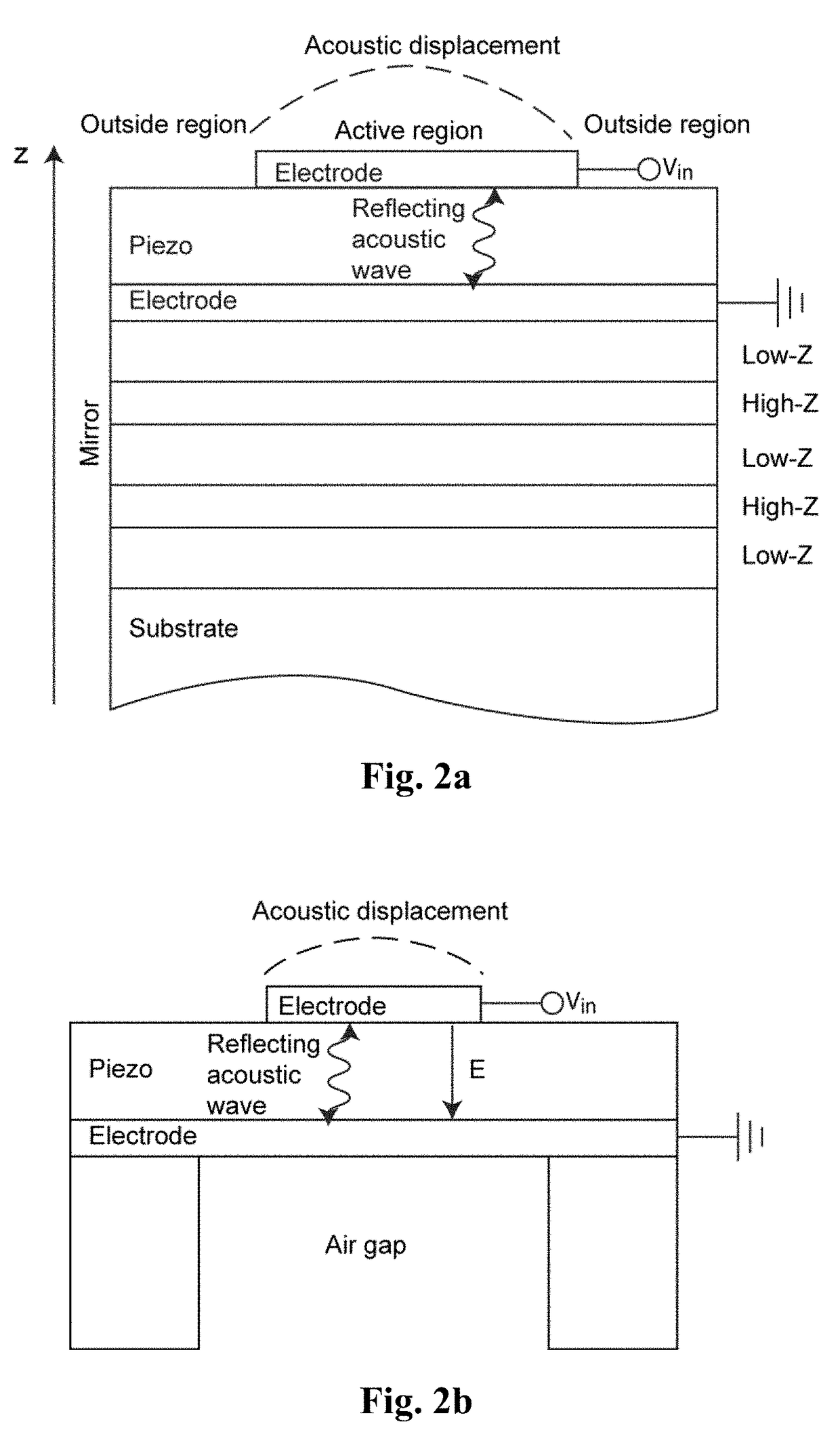Wide-band acoustically coupled thin-film BAW filter
a thin-film baw filter and wide-band acoustic wave technology, applied in the direction of electrical equipment, impedence networks, etc., can solve the problems of large number of layers and their sensitivity to the thickness of piezolayers, limiting somewhat the design of the acoustic mirror, and difficulty in the fabrication process. , to achieve the effect of less space and simple manufacturing process
- Summary
- Abstract
- Description
- Claims
- Application Information
AI Technical Summary
Benefits of technology
Problems solved by technology
Method used
Image
Examples
example filter
with Measurement Results
[0085]One exemplary example is described herein along with the corresponding measurement results from the example filter. The structure of the filter will now be described below.
[0086]The filter of the present example consists of a thin-film stack. The nominal thin-film layer thicknesses of the acoustic stack are set forth in Table 7, from bottom to top. The substrate of the filter in the example is silicon. The electrode structure used is interdigital and similar to that shown in FIG. 1(b). A microscope image of the present example is also presented in FIG. 9. The total number of electrodes in 5 and 6 is N=31, the electrode width W=3 μm, the gap width G=2 μm, the electrode length L=200 μm and the probe pad size is 150 μm×150 μm.
[0087]Although the electrode and gap width W and G are constant in FIG. 1(b) as well as in the component introduced below in FIG. 9, the structure need not be limited to constant W / G and / or constant period.
[0088]
TABLE 7Nominal layer t...
PUM
 Login to View More
Login to View More Abstract
Description
Claims
Application Information
 Login to View More
Login to View More - R&D
- Intellectual Property
- Life Sciences
- Materials
- Tech Scout
- Unparalleled Data Quality
- Higher Quality Content
- 60% Fewer Hallucinations
Browse by: Latest US Patents, China's latest patents, Technical Efficacy Thesaurus, Application Domain, Technology Topic, Popular Technical Reports.
© 2025 PatSnap. All rights reserved.Legal|Privacy policy|Modern Slavery Act Transparency Statement|Sitemap|About US| Contact US: help@patsnap.com



